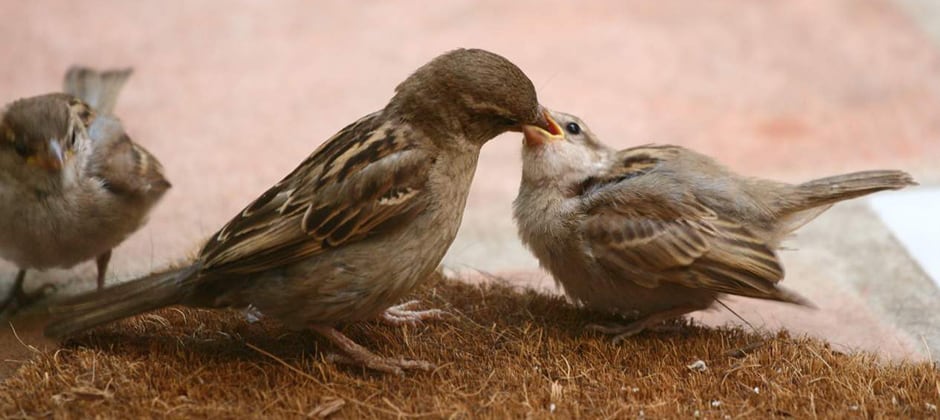Share this article
City life may be a trap for sparrows
House sparrows and humans have a lot in common. Sparrows nest on the same buildings where people live and work. They eat the scraps of food that humans drop on the sidewalk. So learning more about how these birds fare in cities can offer insights into what may be affecting other urban wildlife, as well as their human neighbors.
“Figuring out how we can co-inhabit space is good for us all,” said Jenny Ouyang, an associate professor at the University of Nevada at Reno, who specializes in urban wildlife.
In a recent study published in Ecological Applications, Ouyang looked at how a range of factors, from noise to nighttime light to food availability, are affecting house sparrows in and around Reno, from the dense downtown of hotels and casinos to the surrounding rural areas. Two stood out in connection with poorer sparrow health—urban density and lead levels in their blood.
Lead levels were unusually high, the researchers found, and they were associated with higher levels of the stress hormone corticosterone in the birds. High lead levels were predicted by urban density, they found. Sparrows in dense areas with high lead levels tended to have lower-weight fledglings.
“I was actually surprised by how strong the correlations were,” Ouyang said.
Ouyang and her team made these discoveries by looking at a very fine scale. Most urban ecology studies rely on satellite imagery to gauge degree of urbanization, she said, and they tend to see the urban-rural divide as a dichotomy. Her team looked at it as a continuum made up of two-square-meter patches, reaching from the dense downtown to the countryside.
“Imagine the peak of neon gaming casino lights to very agricultural, rural areas,” she said.
House sparrows seemed an ideal species to look at to understand how the urban environment was affecting wildlife. Wherever humans are, it seems, these nonnative songbirds are, too.
“As a child, it’s one of the first birds you might encounter besides pigeons or crows,” Ouyang said. “They’re smart. They go after human foods. If you hold a french fry, they might take it out of your hand.”
Cities might seem like a safe place for sparrows, away from predators that could threaten them in the wild. But Ouyang wonders if cities actually create an ecological trap, offering more dangers than advantages to the birds.
For her, some key questions remain. What is it about urban density that is affecting sparrows? Is it the density itself, or does density represent other factors—like lights, noise or pavement—that comes along with it.
And how are the birds ingesting lead—a substance banned from building materials? Is it in the soil? The water? The gravel they eat to help digest their food?
That could raise concerns about lead affecting other urban wildlife as well as humans, Ouyang said, and they’re issues she hopes to pursue further.
“It’s important to consider birds as an indicator of more permeant problems in our environment,” she said. “If sparrows aren’t doing well, what else isn’t doing well?”
Ouyang was inspired to study urban ecology by her own personal experience. After 10 years away from her hometown of Xi’an, China, she barely recognized it when she returned. What had been a rural area was now filled it skyscrapers. Similar forces are happening all over the world, she said, and it’s affecting wildlife.
“The planet is changing,” Ouyang said. “There are very few places that are quote-unquote ‘natural,’ and studying urban ecology is an important issue for how we co-inhabit spaces.”
Header Image: Cities offer advantages to house sparrows, but they also present threats that affect their health. Credit: Z. Darius








